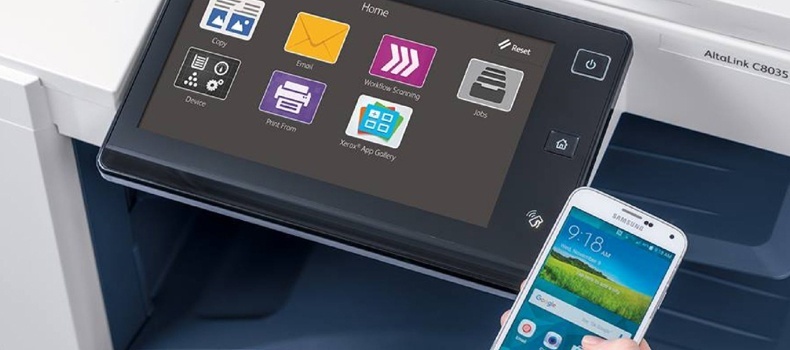Stay up to date with our latest news and insights
Supporting description on the types of content that feature in the blog.

Businesses that fail to digitise the way they work, connect and communicate with customers risk being left behind.
Digital transformation (DX) should be an ongoing strategy for every firm. Workflow automation, artificial intelligence and analytics are fast creating digital workplaces, at the heart of which sit multifunction devices (MFDs) and today’s latest printers.
Analogue processes aren’t going away, but these devices perform at the intersection of the analogue and digital worlds, and ensure teams have access to processes that are efficient, automated (where required) and capable of delivering insightful data.

The digital workplace is transforming the way employees operate, whether they’re customer-facing or remote, and intelligent MFDs and digital devices are shaping digital transformation.
What ties all of this together is a focus by device manufacturers and software developers on mobility.
The digital worker no longer has to print and carry documents; they simply ‘DX’ them. Thanks to MFDs keeping up with DX-driven accessibility and new methods for information flow, the latest devices enable users to swipe and tap their way through daily tasks as they would do on their smartphone.
Mobility is now baked into device design, thus creating a digital workplace that lets users:
You may not have noticed, so clever is the design, but today’s multifunction printers (MFPs) function like our smartphones. Interfaces that were once complex and unapproachable now feel as familiar as using your favourite app or responding to an instant message.
Despite this, DX isn’t just about inherited smartphone technology. Multifunction device technology impacts the productivity and efficiency of business teams, which is why less-capable devices can be significant obstacles to creating a digital workplace.
By implementing managed print and document services, business devices can become more productive and aid smooth workflows for day-to-day operations.
It’s best to think of today’s imaging systems as participants of digital transformation. Multifunction devices play an important role in the Internet of Things, and by adopting MPS and MFPs, your business should be able to accelerate its digital transformation journey.
It’s all about enabling employees to work the way they want to work, from any device and with maximum security. Whether they’re in the office or sat in a coffee shop, there should also be super-simple connectivity made available to cloud service and network-based locations.
Combine a great DX strategy with managed print and document services, and you’ll make employees, shareholders and customers happy. Without a fleet of connected devices and their DX-ready functionally, the digital workplace will remain a pipe dream.
Supporting description on the types of content that feature in the blog.

20-09-2024
Digital document management tools offer a range of compelling benefits for businesses, including a PDF editor, a file converter and a form generator. You can also integrate with digital signatures qui...

20-09-2024
When choosing a SaaS software to deal with your company’s PDF documents and enable forms to be digitally sent and signed, you’ll want a product that’s user-friendly and easy to use. With Tungsten’s Po...

11-07-2024
Belkin is a global technology company that provides high-quality electronics products, from wireless chargers to power banks. Their people-centric approach and best-in-class functionality have positio...